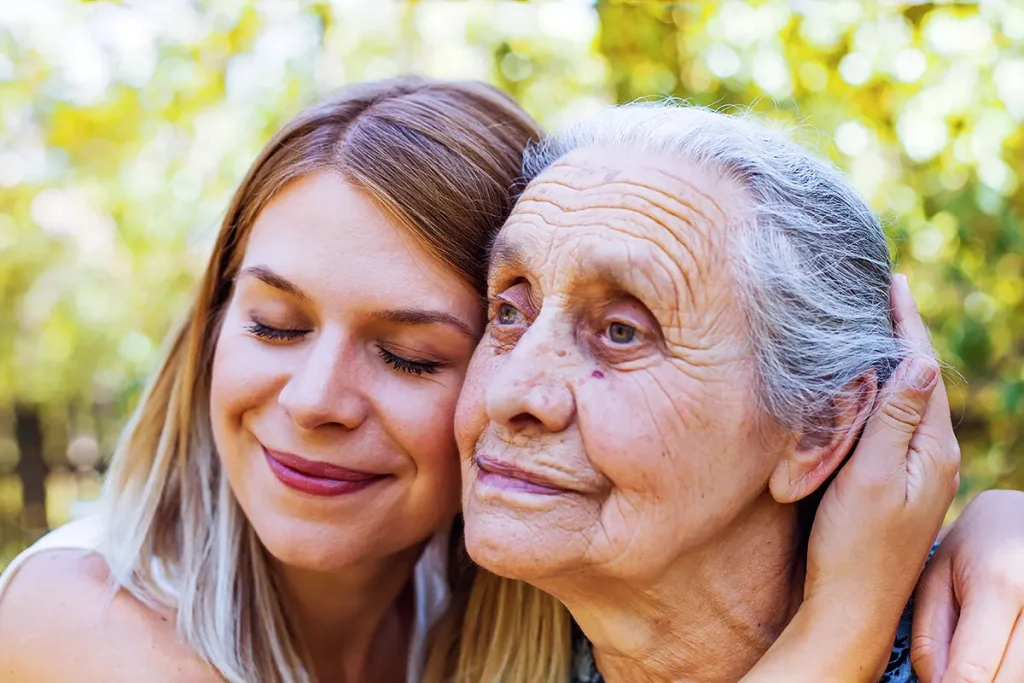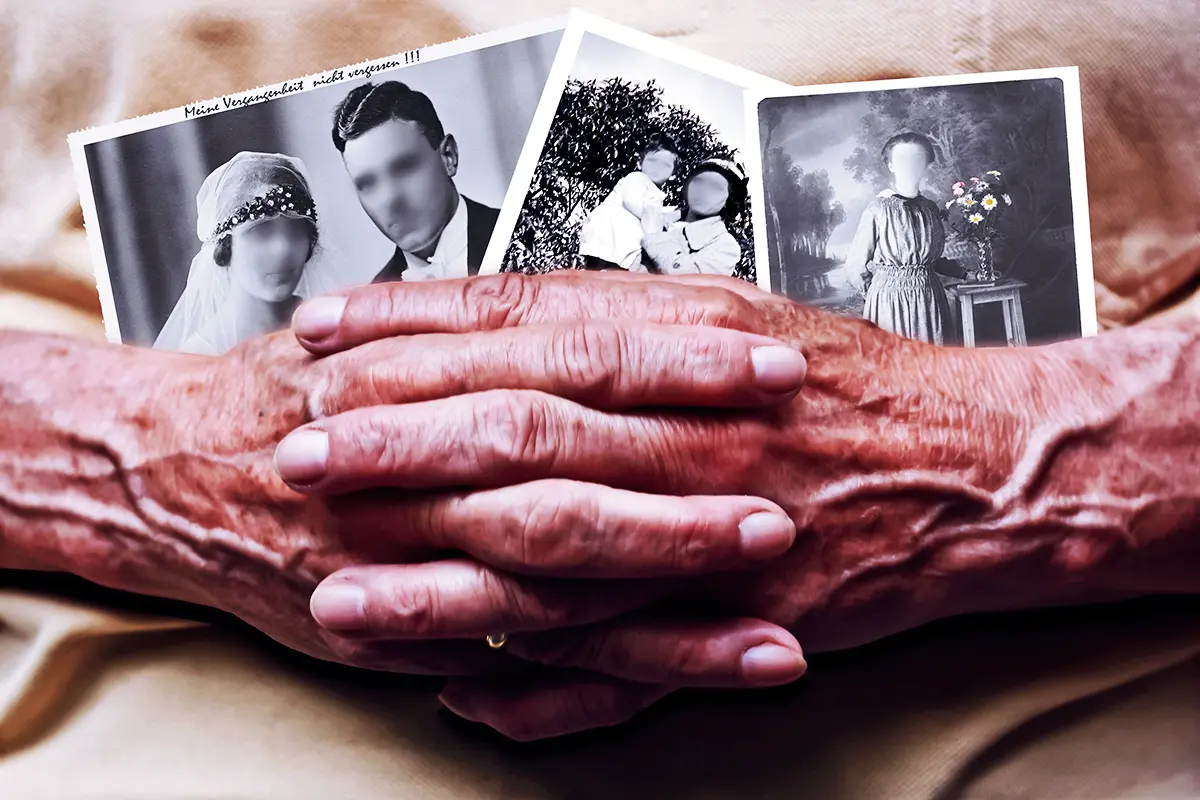In the quiet suburb of Maple Grove, Margaret stands at her kitchen window, her once-sharp eyes now clouded with confusion. “Robert,” she calls out, her voice tinged with frustration, “when did we move the garden?” Her husband of 50 years looks up from his crossword puzzle, a familiar ache in his chest. The garden hasn’t moved in three decades, but Margaret’s mind has begun its own journey—a winding path through the fog of dementia.
- Understanding the Progression: Dementia’s Unfolding Chapters
- Early Days: Fostering Independence Amidst Uncertainty
- The Middle Path: Adapting to Increasing Care Needs
- Late-Stage Realities: Comfort and Dignity in the Twilight
- The Caregiver’s Odyssey: Evolving with Each Season
- Preserving Family Bonds: Redefining Connections as Memories Fade
This is not just Margaret’s story. It’s the story of millions of families navigating the complex stages of dementia, adapting their care strategies as cognitive abilities ebb and flow like changing seasons. From the early whispers of memory loss to the profound challenges of late-stage care, each phase demands a unique approach, testing the resilience and creativity of those providing support.
Overview:
- Dementia progresses through distinct stages, each requiring tailored care strategies and adaptations.
- Early-stage focus: Maintaining independence while implementing safety measures and planning for the future.
- Middle-stage challenges: Increased assistance with daily activities and managing behavioral changes.
- Late-stage priorities: Ensuring comfort, dignity, and quality of life through specialized care techniques.
- Caregiver adaptation is crucial, with emphasis on education, support, and self-care throughout the journey.
- Family dynamics evolve, necessitating new ways of connecting and preserving relationships.
Understanding the Progression: Dementia’s Unfolding Chapters
Dr. James leans forward in his chair, his eyes meeting Robert’s worried gaze. “Think of dementia as a book, Robert,” he explains, his voice gentle but firm. “Each stage is a chapter, with its own challenges and themes. Our job is to read it carefully and respond accordingly.”
Margaret’s journey through the early signs of dementia had been subtle—a misplaced book here, a forgotten appointment there. But as Robert and their daughter Sarah sat in Dr. James’s office, the reality of their new normal began to sink in.
“In the early stage,” Dr. James continues, “you might notice minor memory lapses or difficulty with complex tasks. As we move into the middle stage, these symptoms intensify—confusion about time and place, significant memory loss, and behavioral changes become more apparent. In the late stage, individuals often require full-time care and may lose the ability to communicate verbally.”
Sarah, ever the pragmatist, interjects, “But Mom’s symptoms don’t always match what we read online. Why is that?” Dr. James nods appreciatively. “Excellent observation. Different types of dementia—Alzheimer’s, vascular dementia, Lewy body dementia—can present differently. For instance, in vascular dementia, symptoms may progress in a more ‘step-like’ manner compared to the gradual decline often seen in Alzheimer’s.”
“The progression isn’t always linear,” Dr. James adds, pulling out a diagram. “There will be good days and bad days. Each person’s journey is unique, influenced by factors like overall health, support system, and even personality.”
As they learn the specifics of each stage, Robert feels a mix of dread and determination. This isn’t the retirement he and Margaret had planned, but he’s resolved to make the best of it. “We’re in this together,” he thinks, reaching for Sarah’s hand.
The importance of ongoing assessment becomes clear as Dr. James emphasizes the need for regular check-ins. “Dementia is dynamic,” he explains. “What works today may not work tomorrow. We’ll need to stay vigilant and flexible, adjusting our approach as Margaret’s needs change.”
How might understanding the stages of dementia help you prepare for the road ahead? What strategies could you implement to stay adaptable in the face of cognitive decline?
Early Days: Fostering Independence Amidst Uncertainty
The kitchen has always been Margaret’s domain, a place where memories were made and love was expressed through carefully crafted meals. Now, it’s become a battleground of sorts—a place where her fading abilities clash with her fierce desire for independence.
Robert watches from the doorway as Margaret struggles with the coffee maker, a device she’s used thousands of times before. His instinct is to step in, to take over, but he remembers Dr. James’s words: “Encourage autonomy while ensuring safety.”
“Hey, love,” he says softly, entering the kitchen. “Mind if I join you for a cup?” Margaret looks up, relief flooding her face. Together, they work through the process, Robert gently guiding without taking control.
This delicate balance becomes the theme of their days. Sarah helps by labeling drawers and cupboards with clear, large print. “It’s not about doing things for Mom,” she explains to her daughter Emily. “It’s about giving her the tools to do things herself, for as long as possible.”
They learn to communicate more effectively, using simple, direct language and giving Margaret time to process information. “Remember, Mom’s not being difficult on purpose,” Sarah reminds her father during a moment of frustration. “We need to adjust our expectations and our approach.”
The family works with Amelia, a social worker, to address legal and financial planning. “It’s not the most pleasant conversation,” Amelia admits, “but it’s crucial to have while Margaret can still participate in the decision-making process.”
As they sit around the dining table, surrounded by documents, Margaret suddenly chuckles. “Well, I may forget where I put my glasses, but I certainly remember what I want for all of you.” Her moment of clarity is a gift, a reminder of the woman behind the diagnosis.
Engaging in meaningful activities becomes a family mission. They create a memory book, filling it with photos and stories. Emily takes charge of this project, spending afternoons with her grandmother, listening to tales of days gone by. “Even if Grandma forgets these stories,” Emily says, “we never will.”
Robert encourages Margaret to continue her book club meetings, adapting as needed. “We might not finish a whole book anymore,” Margaret’s friend Barbara notes, “but the companionship is what matters most.”
What meaningful activities could you engage in with a loved one in the early stages of dementia? How might you balance safety concerns with the need for independence?

The Middle Path: Adapting to Increasing Care Needs
As the months slip by, the challenges intensify. Margaret’s world begins to shrink, her once-bustling social life giving way to confusion and anxiety in crowded places. Robert finds himself taking on roles he never imagined—hairdresser, dresser, scheduler.
“I never knew there were so many types of incontinence products,” he confides to Tom at the support group, earning a knowing chuckle from the other caregivers. These meetings become a lifeline, a place to share both the heartaches and the unexpected moments of humor.
Sarah notices the toll it’s taking on her father. “Dad, we need to talk about getting some help,” she says gently one evening. Robert’s initial resistance is strong, but as Margaret’s needs increase, he realizes he can’t do it all alone.
Enter Elena, a home health aide with a heart of gold and the patience of a saint. Her presence is a game-changer, bringing professional expertise and a fresh energy to the household. “Margaret, mi amor,” she says, expertly diffusing a moment of agitation, “let’s sing that song you love while we get you dressed.”
The family learns to roll with the punches, adapting to Margaret’s changing moods and abilities. They discover that some of the hardest moments can also bring unexpected joy. Communication becomes more about tone and touch than words alone. “It’s like learning a new language,” Sarah reflects, “one where a gentle hand on the shoulder can say more than a thousand words.”
Robert works with Linda, their tech-savvy neighbor, to install smart home devices that help manage Margaret’s environment. Automatic lights reduce the risk of falls at night, and a specialized alarm system alerts them if Margaret wanders towards the door unattended.
One particularly difficult evening, as Margaret struggles to recognize her surroundings, Robert puts on their wedding song. As the familiar melody fills the room, Margaret’s eyes clear for a moment. She reaches for Robert’s hand, and they sway together in the living room, lost in a memory that transcends the fog of dementia.
“It’s like finding diamonds in the rubble,” Sarah reflects, watching her parents dance. “Those moments of connection… they’re everything.”
How do you think you would cope with the increasing care needs of a loved one with dementia? What strategies might help you find moments of joy amidst the challenges?
Late-Stage Realities: Comfort and Dignity in the Twilight
The decision to move Margaret to a specialized memory care facility is heart-wrenching but necessary. Robert, Sarah, and Emily stand in the sunlit room that will become Margaret’s new home, each lost in their own thoughts.
“It feels like giving up,” Robert whispers, his voice thick with emotion. Dr. James, who has come to support the family during the transition, places a comforting hand on Robert’s shoulder. “This isn’t giving up, Robert. This is ensuring Margaret gets the specialized care she needs. Your love for her hasn’t changed; it’s just taking a different form.”
In this new chapter, the focus shifts from maintaining cognitive function to ensuring comfort and dignity. The family works closely with the facility’s staff to create a care plan that honors Margaret’s essence.
Emily, showing wisdom beyond her years, creates a “sensory blanket” for her grandmother, filled with textures and trinkets that Margaret loves—a swatch of silk from her favorite scarf, the smooth wood of her old library card, the jingle of her cherished wind chimes. “Even if Grandma doesn’t remember what these things are,” Emily explains, “they might still bring her comfort.”
Dr. James works closely with the facility’s medical team to manage Margaret’s symptoms, focusing on quality of life. “At this stage,” he explains to the family, “our goal is to minimize discomfort and maximize moments of peace.”
They learn about the importance of proper positioning to prevent bedsores, techniques for assisting with eating and swallowing, and the subtle signs that might indicate pain or distress in someone who can no longer communicate verbally.
Communication becomes a language of touch, presence, and unconditional love. Robert spends hours by Margaret’s bedside, reading her favorite poems, his voice a lifeline to shared memories. Sarah brings in lavender-scented lotion, massaging her mother’s hands, a sensory connection that seems to bring Margaret peace.
As Margaret’s condition progresses, the family faces difficult decisions about interventions and end-of-life care. They work with a palliative care specialist to understand their options and ensure Margaret’s wishes, expressed years ago, are honored.
There are difficult moments—times when Margaret doesn’t seem to recognize her family, when the distance in her eyes feels insurmountable. But there are also moments of profound connection that defy explanation.
One afternoon, as Robert sits holding Margaret’s hand, she turns to him with a sudden clarity in her eyes. “Thank you,” she whispers, squeezing his hand. It’s a moment of recognition, a gift that Robert will treasure always.
Dr. James reminds the family, “Even in this stage, Margaret is still here. She may not communicate in ways we expect, but she can still feel love and comfort. That’s what matters most now.”
How might you ensure dignity and comfort for a loved one in late-stage dementia? What aspects of their personality would you strive to honor and preserve?
The Caregiver’s Odyssey: Evolving with Each Season
Robert stands at the window of his empty house, the silence deafening after years of constant caregiving. The journey has changed him in ways he never anticipated. He thinks back to the early days, when the diagnosis felt like the end of the world. Now, he sees it differently—not an ending, but a transformation.
“You know,” he says to Sarah, who has come to check on him, “I never thought I’d say this, but caring for your mother… it’s taught me more about love than I learned in all our years together before.”
Sarah nods, understanding the depth of what her father is saying. She’s been on her own journey, balancing her role as a daughter with her responsibilities as a mother and professional. “It’s like learning to dance to music that keeps changing,” she muses. “Just when you think you’ve got the steps down, the tune shifts.”
The support group has been a lifeline for both of them. Tom, whose wife is in the final stages of Alzheimer’s, often says, “We’re like a tribe of unwilling experts. None of us asked for this knowledge, but now that we have it, we’ve got to share it.”
They’ve attended workshops, read countless books, and even taken online courses to better understand dementia and caregiving techniques. “Knowledge is power,” Sarah often reminds her father. “The more we understand, the better we can care for Mom—and ourselves.”
They’ve learned the hard way about the importance of self-care. Robert remembers the day he snapped at Margaret, the guilt that followed, and the wake-up call it provided. “You can’t pour from an empty cup,” Elena had gently reminded him. Since then, he’s made a point of taking time for himself—even if it’s just a quiet cup of coffee in the morning or a walk around the block.
Sarah has found solace in unexpected places. The adult coloring books Emily bought her as a joke have become a meditative practice. “There’s something soothing about staying within the lines,” she explains, “when so much of life feels like it’s coloring outside them.”
As Margaret’s care needs increased, the family had to confront the reality that they couldn’t do it all on their own. The decision to bring in professional help, and eventually to transition Margaret to a memory care facility, was painful but necessary.
“It’s not about giving up,” Amelia, their social worker, had assured them. “It’s about recognizing when specialized care is in Margaret’s best interest. Your role as loving family members doesn’t diminish—it just changes form.”
They’ve both become advocates in their own way. Robert volunteers at the local Alzheimer’s Association, sharing his experiences with newly diagnosed families. Sarah has started a blog, chronicling the challenges and unexpected joys of their journey.
“It’s about finding meaning in the madness,” Robert reflects. “And remembering that even as a caregiver, you’re still growing, still learning.”
How might you maintain your own well-being while caring for someone with dementia? What support systems could you put in place to help you through the journey?

Preserving Family Bonds: Redefining Connections as Memories Fade
Emily sits cross-legged on her bed, surrounded by photos, ticket stubs, and scraps of paper—the collected memories of a lifetime with her grandmother. She’s creating a new page for the family memory book, a project that has taken on new significance as Margaret’s condition progresses.
“Hey, Em,” Sarah calls from the doorway. “How’s it going?” Emily looks up, her eyes bright with unshed tears. “I found this,” she says, holding up a faded recipe card. “It’s Grandma’s famous apple pie. I didn’t even know we had this.”
Sarah sits beside her daughter, running her fingers over her mother’s familiar handwriting. “You know,” she says softly, “we may not be able to share new memories with Grandma, but we can keep her legacy alive by sharing these memories with each other.”
This becomes the family’s mission—finding new ways to connect, not just with Margaret, but with the story of their family. Robert starts a tradition of Sunday dinners, where he attempts to recreate Margaret’s recipes. They’re not always successful—the first attempt at the apple pie is more applesauce than pie—but the laughter and stories shared around the table are priceless.
Emily and her younger siblings are encouraged to be part of Margaret’s care in age-appropriate ways. The younger ones help with simple tasks like brushing Margaret’s hair or reading to her, while Emily takes on more responsibilities, often sitting with her grandmother to give Robert a break.
“It’s not always easy,” Emily confides in her mother one day. “Sometimes I miss how Grandma used to be. But then I remember what you told me—that loving someone means loving all of them, even the parts that are hard.”
Sarah hugs her daughter tightly, proud of the empathy and maturity she’s displaying. “You’re right, sweetie. And you know what? By being here for Grandma, you’re not just helping her—you’re learning invaluable life lessons about compassion and resilience.”
For Robert, maintaining his connection with Margaret as her spouse has been one of the most challenging aspects of their journey. The dynamics of their relationship have shifted dramatically, but he’s determined to preserve the essence of their bond.
“I may not be her husband in the traditional sense anymore,” Robert explains to Dr. James during a check-in, “but I’m still her partner in this journey. We still have moments of intimacy, even if they look different now.”
He describes how he’s learned to connect with Margaret through touch—holding her hand, brushing her hair, or simply sitting close to her. “Sometimes, when I’m reading to her, she’ll lay her head on my shoulder, just like she used to when we’d watch movies together. In those moments, I know we’re still us.”
Linda, their neighbor, notices the change in the family dynamic. “You all seem closer now,” she observes one day. Robert nods, a bittersweet smile on his face. “Margaret’s condition has forced us to really see each other, to appreciate the time we have.”
They find creative ways to include Margaret in family life, even as her ability to participate diminishes. Emily sets up video calls, showing her grandmother the garden or playing her favorite music. Even if Margaret doesn’t always respond, the family takes comfort in knowing she’s part of the moment.
Sarah wrestles with how to explain the situation to her younger children. She finds help in children’s books about dementia and in honest, age-appropriate conversations. “Grandma’s mind is changing,” she explains, “but her heart still knows us.”
The family starts new traditions that can include Margaret. They have “silent discos” in her room at the care facility, everyone wearing headphones and dancing to the same music. Margaret may not always join in, but her face often lights up at the sight of her family moving and laughing together.
As they navigate this new reality, the family discovers that love doesn’t require memory. It lives in the gentle touch of a hand, in the comfort of a familiar voice, in the legacy of stories and traditions passed down.
“We’re not just preserving memories,” Robert reflects one evening, as the family looks through old photo albums. “We’re preserving the essence of who we are as a family. Margaret is still shaping us, still teaching us, even now.”
How might you preserve and strengthen family bonds in the face of a loved one’s cognitive decline? What new traditions or ways of connecting could you create?
Your Mission Starts Now: Embracing the Journey with Heart and Hope
As we conclude this exploration of dementia’s challenging terrain, consider these actionable steps:
- Start a family memory project, capturing stories and traditions while they’re still fresh.
- Educate yourself about the stages of dementia, preparing for each chapter before it unfolds.
- Build a support network—reach out to local support groups, online communities, or counseling services.
- Prioritize self-care as a caregiver, remembering that your well-being is crucial to providing quality care.
- Advocate for better dementia care and research in your community.
Remember, in the landscape of dementia, compassion is your compass, and love is the map that will guide you home. Your journey may be challenging, but it also offers opportunities for profound connection, personal growth, and unexpected moments of joy.
What will you do today to prepare your heart and home for the possibilities that lie ahead in the dementia journey?
















